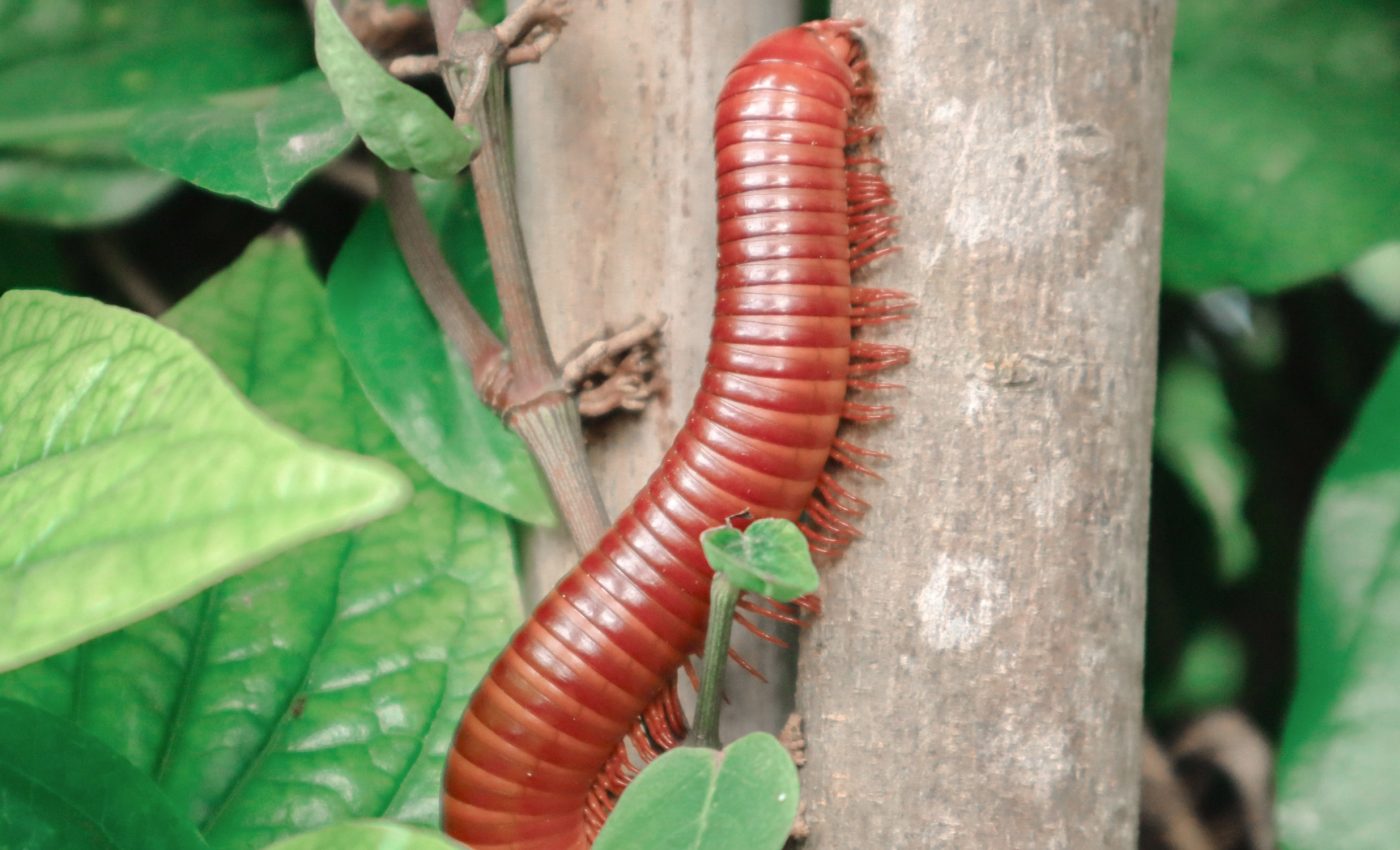
Millipede chemicals may unlock a new generation of drugs
Millipedes rarely make headlines. Their many legs and secretive lifestyles keep them in the background. Yet a closer look reveals something extraordinary. These ancient arthropods produce chemical compounds that may lead to new therapies for neurological disorders and pain relief.
Emily Mevers and her team from Virginia Tech recently isolated new molecules from the secretions of Andrognathus corticarius. This millipede species was discovered on campus in Stadium Woods.
The new molecules include two rare classes of alkaloids – andrognathanols and andrognathines. The findings demonstrate how millipede compounds may help with pain.
Rare compounds found in millipedes
Millipede chemistry belongs to a narrow lineage. Only species from the subterclass Colobognatha produce terpenoid alkaloids. This group includes four species-rich orders. Among them, Platydesmida stands out for its structural diversity.
Earlier research focused on just one order, Polyzoniida. But more recent studies revealed that Platydesmida millipedes produce a much wider variety of complex alkaloids. Some of these compounds are structurally unique in the animal kingdom.
Andrognathines have a chemical structure made of two connected rings. One ring has five atoms, and the other has six. Together, this makes a “5,6-heterocyclic core.” Attached to this core are small chemical groups called ester side chains, which help the molecule interact with other substances.
Andrognathanols are even more complex. Their core structure connects four rings in a pattern labeled 6,6,6,5 (based on the number of atoms in each ring). What makes them special is that they contain seven continuous stereogenic centers.
That means there are seven spots in a row where the 3D shape of the molecule can flip, making it highly detailed and difficult to recreate in the lab.
Millipede chemicals may target pain
Each compound was carefully analyzed using high-resolution liquid chromatography and NMR techniques. The scientists noted key mass fragments that indicated differences between andrognathines and other millipede alkaloids.
These compounds form part of the millipede’s defense strategy. When disturbed, the animal releases the secretions through ozopores on its sides. The alkaloids affect ant behavior, causing them to freeze or slow down. This is a likely defense tactic.
But that is not all. Some andrognathanols showed structural similarities to pumiliotoxins. These molecules are known to act on sodium channels in nerve cells. That similarity raised hopes for possible biomedical uses.
Millipede secretions change ant behavior
The researchers tested the secretions’ effects on ants (Aphaenogaster sp.), a predator often found near these millipedes. During controlled assays, ants exposed to these compounds exhibited prolonged freezing behavior compared to control groups.
The compounds did not significantly change how long ants stayed near the chemical source. But their altered movement hinted at neural interference, possibly through receptor modulation.
Every mature A. corticarius millipede secretes these alkaloids in large amounts. Their secretion quantity correlates with body size and the number of ozopores. These are small glands that release the compounds when the millipede is threatened.
Some millipede compounds target pain
The findings are hopeful because of the Sigma-1 receptor. This receptor helps regulate pain and neuroplasticity. It is also linked to diseases such as Alzheimer’s and neuropathic pain.
Previous research found that similar compounds from another millipede, Ischnocybe plicata, potently bind to Sigma-1. That work sparked interest in millipede alkaloids as potential drug candidates.
Mevers’ team tested two andrognathines and three andrognathanols. Compound 1 showed mild binding to Sigma-1, with some selectivity over Sigma-2. Others showed less activity. But their unique structures and neuroactive effects still make them promising.
“These compounds are quite complex, so they’re going to take some time to synthesize in the lab,” said Mevers.
Millipedes and future pain drugs
The path from chemical discovery to drug approval is long. First, scientists must replicate the molecules in the lab. Then they can test their effects on human cells and animal models.
Eventually, these efforts may lead to treatments for chronic pain or neurodegenerative diseases.
Millipedes, with their fossil record stretching back to the Cretaceous, may soon help modern medicine. Their secretions are not just defense tools. They are blueprints for the next generation of drugs.
The study is published in the Journal of the American Chemical Society.
—–
Like what you read? Subscribe to our newsletter for engaging articles, exclusive content, and the latest updates.
Check us out on EarthSnap, a free app brought to you by Eric Ralls and Earth.com.
—–













